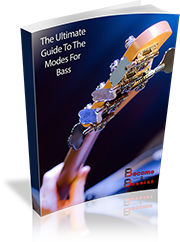A funny thing sometimes happens with beginning and intermediate bass players. They get pretty good – maybe even really good – at knowing which notes work.
They learn the right scales, arpeggios, chords – everything – and that’s great!
However, what often happens is that there is such a focus on playing good notes that another equally important part of the music gets ignored:
The rhythm.
What does this look like when it comes to improvising on bass? It means all the right notes come out, but the rhythm is either boring or predictable or sometimes just plain old out of time.
That’s exactly what happens when you don’t really think about the rhythm.
It doesn’t need to be like this though, and in today’s lesson, I want to show you a simple exercise that will very gently nudge you to start consciously using rhythm rather than just accepting what falls out of your bass.
Check out the lesson here and try out the conscious rhythm exercise for yourself:
Video Not Showing Up Here? Watch On YouTube

Stop Struggling With The Modes On bass
FREE - Download the 16-page Ultimate Guide To The Modes Of The Major Scale For Bass and:
- Get a full explanation of the modes in simple, easy-to-understand terms
- Discover how the modes REALLY work and how they're related to different chords
- Learn how to use the modes, and where you can use each of them
- Download the free PDF guide plus 24 practice tracks that will have you using the modes TODAY
If you combine the notes you already know are correct with this kind of strong rhythmic conception, you’ll find your improvisation will flow more, be more interesting and unpredictable.
In short – you’ll have much better bass solos! It’s also going to be a lot more fun – almost like a game.
If you find yourself struggling to really stick to the exercise though, don’t worry – that’s normal. You might start playing before you planned or keep playing after you should have stopped.
This means that you may not have 100% control of your rhythm just yet, but that exactly what the exercise targets. Start by practicing slowly and with very simple rhythmic ideas and over time you can up the speed and the complexity of your rhythmic ideas.
Now I’ve just given you 4 examples to start with, but you can use an almost infinite combination of rhythms and rests. The only limit here is your imagination.
As always, if you have any questions, just let me know. I’d be more than happy to help out however I can.
Good luck with the lesson and happy playing!
Cheers,



Leave a Reply